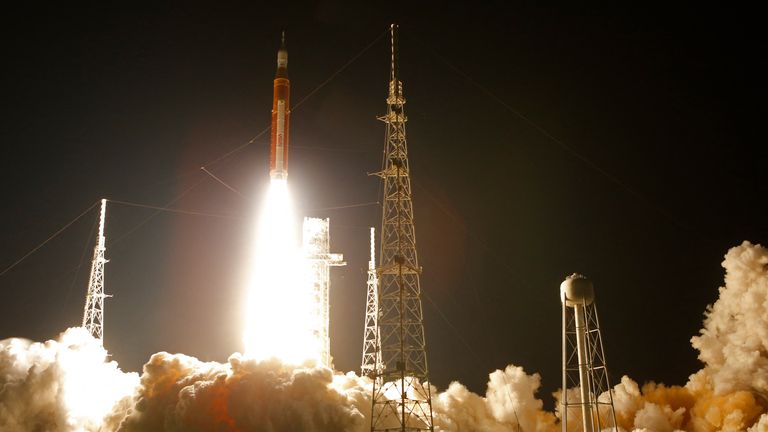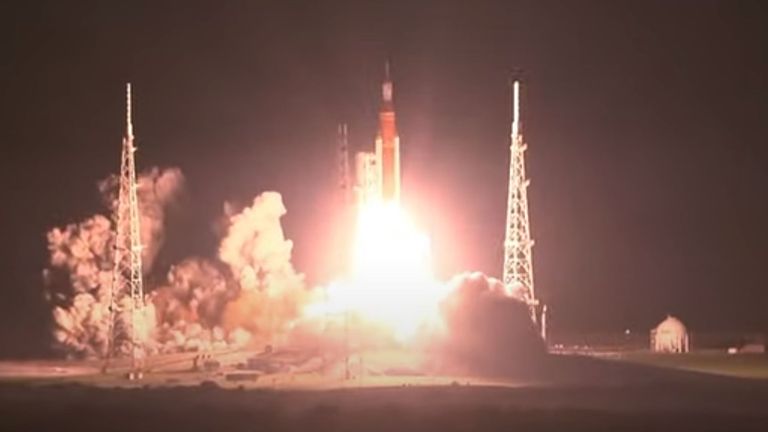NASA’s most powerful rocket ever launched into space in the first step of a human mission to return to the moon.
The next-generation, multibillion-dollar Space Launch System blasted off from Florida’s Kennedy Space Center in the early hours of Wednesday morning, accompanied by the Orion spacecraft.
It took off from the launch pad at Cape Canaveral at 1.47am local time (6.47am in the UK), about 40 minutes into the two phases after post-fix repairs to leaky and faulty communications equipment. hour window.
‘Entering the history books’ – keeping up with Artemis 1’s launch
The unmanned voyage is the first flight of NASA’s Artemis program, which will eventually send a crew of astronauts to the moon for the first time since Apollo 17 in December 1972.
The launch of Artemis 1 on Wednesday morning came after several delays dating back to the summer, but the stunning images from the East Coast of the United States certainly made the wait worth it.
Launch director Charlie Blackwell-Thompson told her team: “We’re all involved in something very special: the first launch of Artemis. It’s the first step in our nation’s return to the Moon and Mars. What you’ve done today Everything will inspire generations to come.”
What will the launch achieve?
The giant rocket produced 8.8 million pounds of thrust at launch, far more than anything NASA had used before, and its two boosters and four RS-25 engines also generated plenty of power.
“You definitely know there’s some power going on there,” said NASA Administrator Bill Nelson, watching it unfold from the roof of the launch center.
For more on science and technology, explore the future with Sky News at Big Ideas Live 2022.
Learn more and book tickets here
Once in orbit, the booster separates from the rocket portion and returns to Earth, leaving Orion and the upper part of the rocket in space.
Orion then deployed its four solar arrays, which can each generate 11 kilowatts of electricity, enough to power two three-bedroom homes.
It’s all happening during the start of a 26-day mission that will see the rocket and Orion travel to the moon and beyond before returning home. Both are equipped with cameras that feed back data and images while you’re among the stars.
While in space, it will deploy 10 tiny satellites that will perform everything from studying how radiation affects yeast DNA to searching for water ice on the moon.
Weather is also a big focus of the test mission, with galactic cosmic rays posing the biggest risk to future astronauts.
“A Great Legacy”
Artemis 2 and Artemis 3 will follow in the coming years—the former, targeted for 2024, is a crewed mission with a very similar path to Artemis 1.
Artemis 3 will go even further by landing its crew on the lunar surface. Scheduled to launch in 2025, it will make history by sending a woman and person of color to the moon for the first time.
NASA hopes to use the Artemis program to build a base camp and conduct annual missions — and use it as a test bed for more ambitious missions, starting with sending humans to Mars.
Mr Nelson said Artemis was “part of a great legacy”.
“It didn’t end with Apollo 17,” he added.
“This time we’re going back, we’re going to learn, and then we’re going to Mars with humans.”


